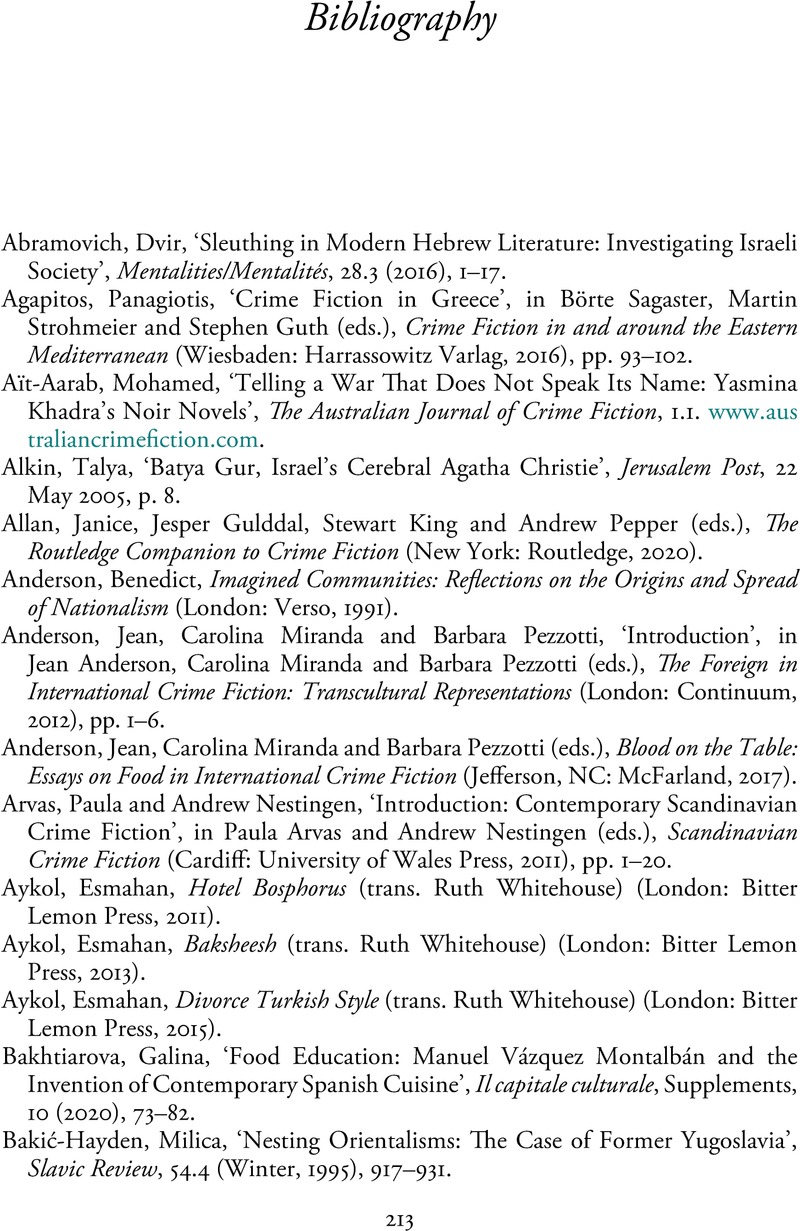Book contents
- Mediterranean Crime Fiction
- Mediterranean Crime Fiction
- Copyright page
- Contents
- Figures
- Acknowledgements
- Introduction
- Chapter 1 The Mediterranean Detective
- Chapter 2 The Mediterranean City
- Chapter 3 Food for Thought in Mediterranean Crime Fiction
- Chapter 4 Crime Fiction and the Past
- Chapter 5 Identity in Mediterranean Crime Fiction
- Chapter 6 Male Gaze and Gender Violence in the Mediterranean Crime Novel
- Conclusion
- Bibliography
- Index
- References
Bibliography
Published online by Cambridge University Press: 09 November 2023
- Mediterranean Crime Fiction
- Mediterranean Crime Fiction
- Copyright page
- Contents
- Figures
- Acknowledgements
- Introduction
- Chapter 1 The Mediterranean Detective
- Chapter 2 The Mediterranean City
- Chapter 3 Food for Thought in Mediterranean Crime Fiction
- Chapter 4 Crime Fiction and the Past
- Chapter 5 Identity in Mediterranean Crime Fiction
- Chapter 6 Male Gaze and Gender Violence in the Mediterranean Crime Novel
- Conclusion
- Bibliography
- Index
- References
Summary

- Type
- Chapter
- Information
- Mediterranean Crime FictionTranscultural Narratives in and around the ‘Great Sea', pp. 213 - 227Publisher: Cambridge University PressPrint publication year: 2023



